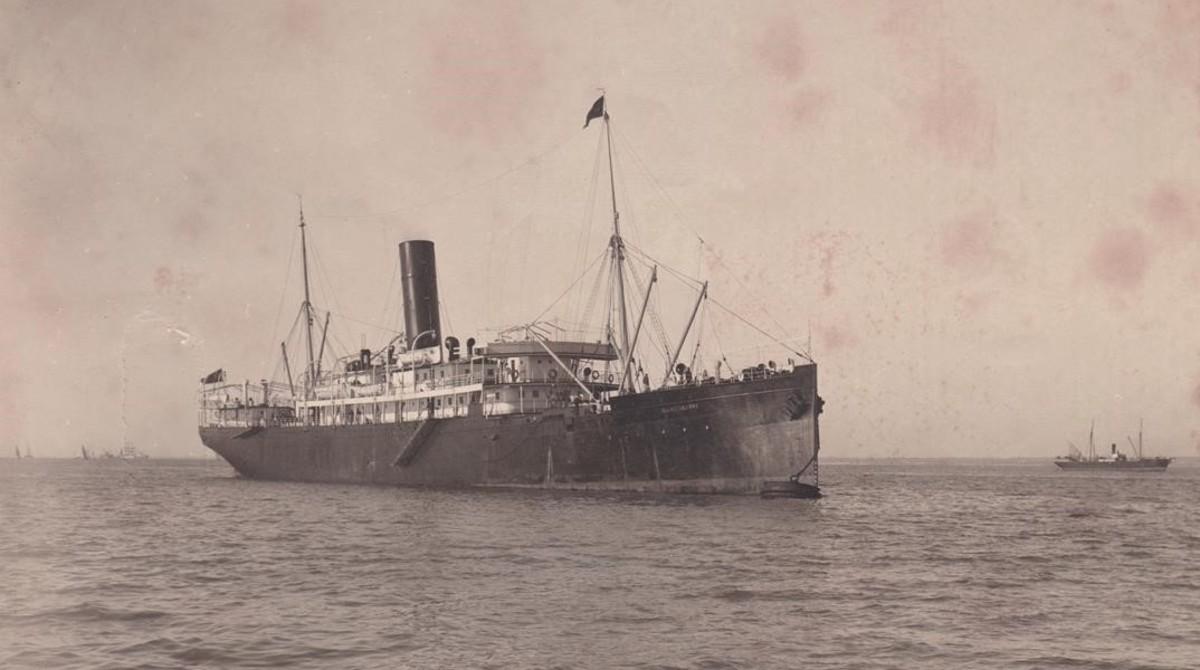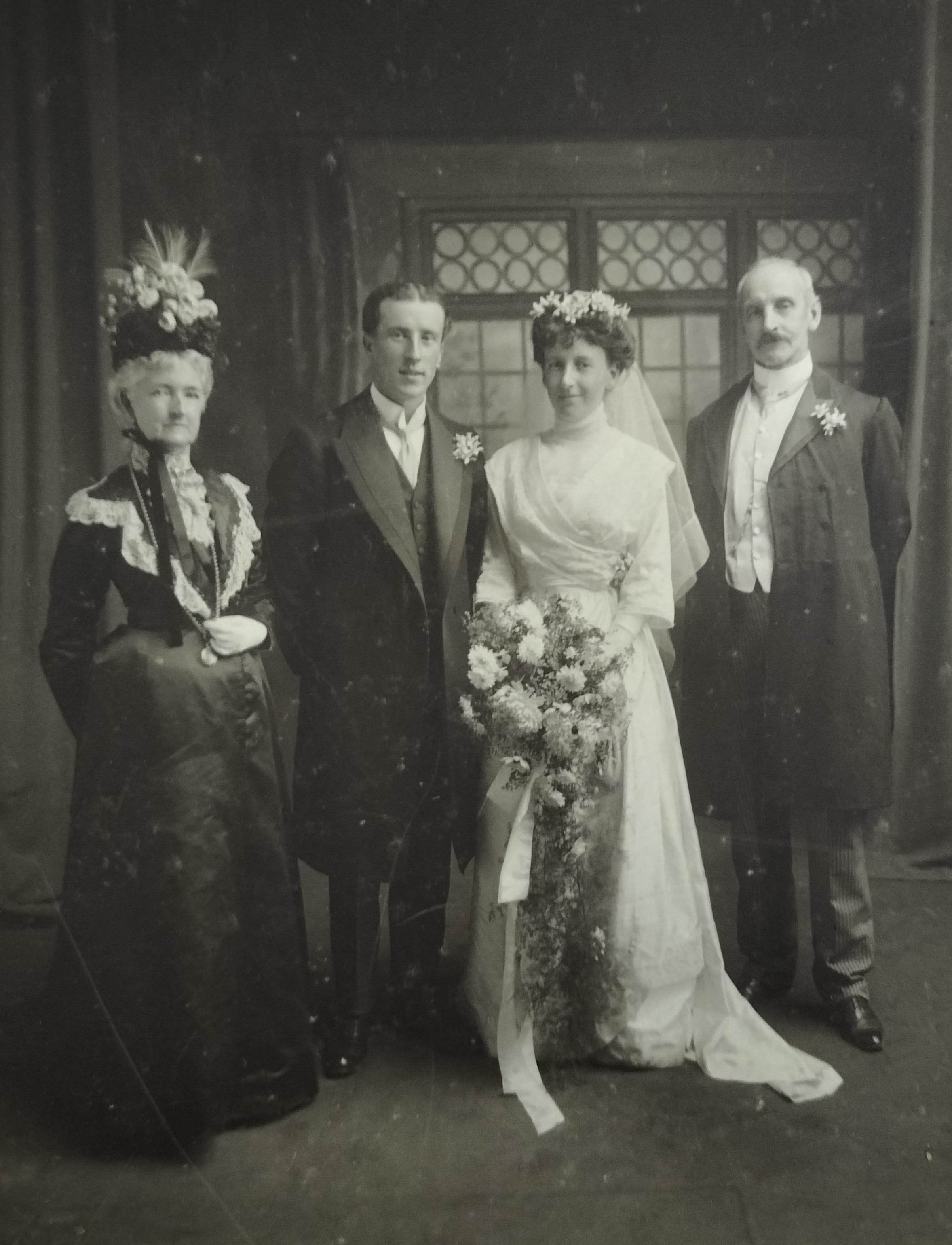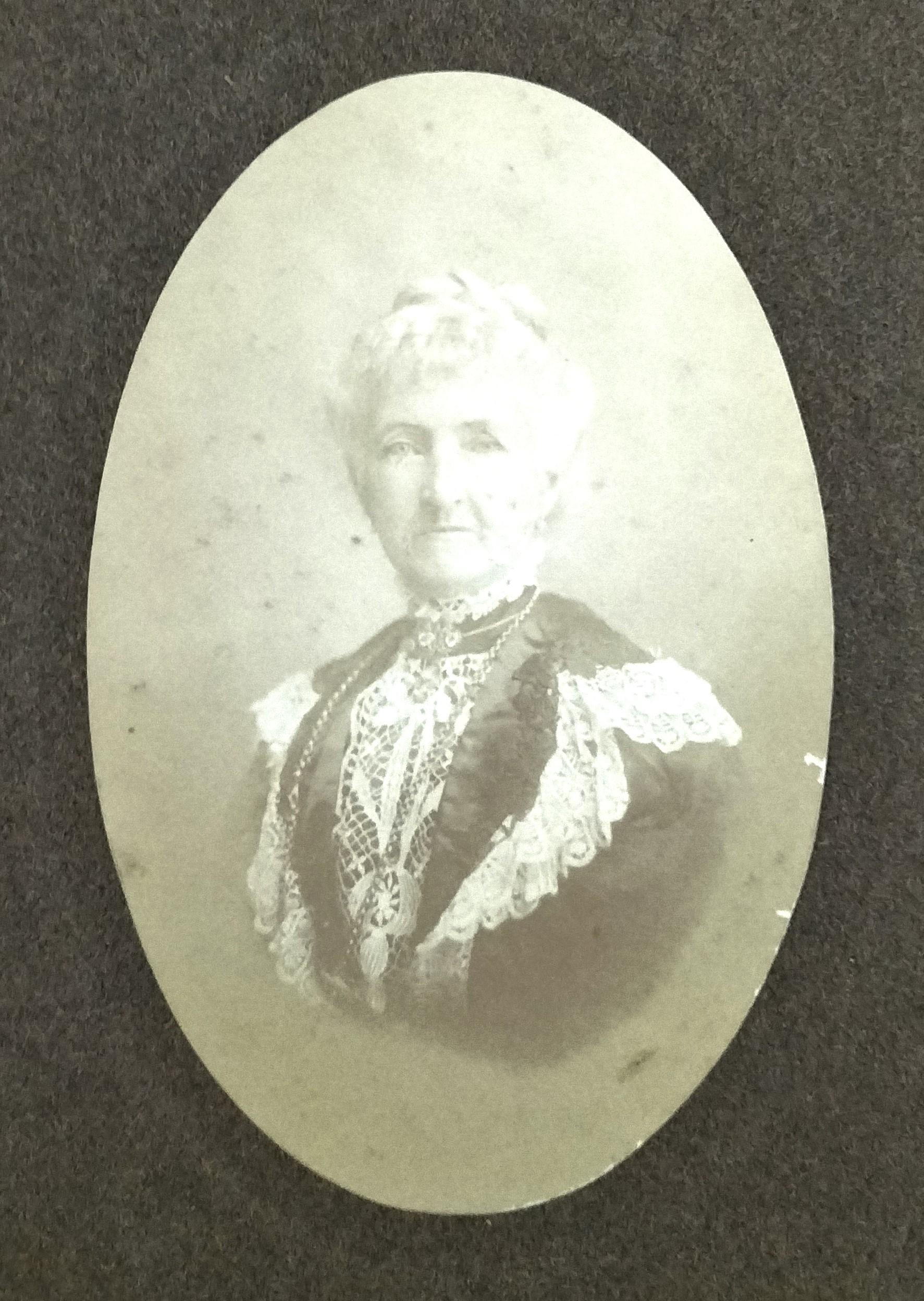
Disclaimer: Any views expressed by individuals and organisations are their own and do not in any way represent the views of The Heritage Portal. If you find any mistakes or historical inaccuracies, please contact the editor.
While spending several days at the South African National Archives in Cape Town researching a theme relating to South African Photographic History, I stumbled upon a file that contained two original antique photographs. It attracted my attention in that it is rather unusual to find early photographs of this nature in archival records.
Although still photography-related, the theme that grabbed my attention was not part of my primary research intent whilst at the archives.
The story that unfolded is a sad one, yet an important one to capture in that it relates to the use of photographs in making a legal determination as to whether passengers have survived a tragic incident at sea.
The photographs contained in the file were used during a commission directed by the Cape Town Supreme Court in 1917.
In this case, the two photographs, captured by the Cape Town-based photographer Akkersdyk (Adderley Street), were marked Appendix B & Appendix C respectively in the inquest documentation.
Amelia Mary Gormley (Wilkinson) applied to the court to have her parents announced dead. She provided the two photographs to assist in the process.
Here is the story.
The fateful night - 26 May 1917
On 21 April 1917, the ship Carlos de Eizaguirre left Barcelona carrying 35 passengers. She reached Las Palmas on 30 April, where she bunkered before departing again on 5 May 1917. When she left the Las Palmas port, she carried 50 passengers, including eleven or twelve women and five children between the ages of three and five years.
In the early hours of 26 May 1917, the S.S. Carlos de Eizaguirre came to its tragic end in the Atlantic Ocean between Dassen and Robben islands – and so did several of its passengers.
At 03h30 on the Saturday morning, there was an explosion on the starboard side resulting in the ship breaking into two pieces whereafter the ship sank within five minutes.
The crew managed to launch only one of her eight lifeboats before the ship sank. This lifeboat contained 24 survivors of which only two were passengers – the rest were crew.
Other passengers managed to board two more lifeboats, but the ship sank before the lifeboats could be launched.
Survivors on the only lifeboat that was successfully launched were picked up by a trawler who brought them to land 10 hours later (13h30 - that same afternoon). It has been suggested that for a week after the incident, bodies were washed ashore. The exact location of the wreck remains unknown.
One other survivor, a member of the engine room crew, was picked up by another boat (the schooner Langebaan) about 33 hours later after been found floating on a piece of wooden wreckage from the ship.
Considering that this incident occurred during the First World War, it has been suggested that a drifting mine sank the ship, causing the deaths of 134 people (50 passengers and 84 crew). Amongst the dead were the Captain (Luzárraga) and the Spanish Consul at Colombo. In conducting my research on the topic, the number of passengers and crew stated does not add up in that, for example, another source states that 125 people died in the dark during the early morning hours.
At the time, the UK Admiralty admitted mining the area but the United Kingdom denied responsibility and rejected a Spanish claim for liability. The shipping company did not publish the news because it lacked insurance against acts of war and was not sure it could meet potential claims of loss and damage. Instead, they elected to state that the ship was involved in a normal sea incident where it found itself in a typical Cape of Good Hope storm, foundering or striking against something underwater.
Representatives from the shipping company met the Spanish Prime Minister, Manuel García Prieto, in Madrid, and privately admitted to him that they suspected the ship had been mined, and asked him to make a claim against the UK government. The UK Admiralty denied it and alleged that the German merchant raider SMS Wolf, which had been in the area four months earlier, must have laid the mine.
Brief History of the Steam Ship Carlos de Eizaguirre
Built by Sir Raylton Dixon and Company, the SS Carlos de Eizaguirre was a steam passenger and cargo liner (see main image). She was launched in 1903 in England under the name Léopoldville. In 1908 she was sold to the African Steamship Company, which renamed her Landana.
Two years on (1910), she was sold again and was renamed after Juan Carlos de Bailly Eizaguirre (1817–1900), a Spanish banker who was also a shipping company director.
The ship was used on the route between Barcelona and Manila via the Suez Canal and Singapore. The route however changed during the First World War when the UK and France decided to decline access via the Suez Canal to non-Allied shipping. The Barcelona – Manila service therefore had to be rerouted via Las Palmas, Cape Town and Durban. It can be argued that this change in route sealed the fate of the ship and its passengers.
Wilkinson family
It was assumed that among the 50 passengers who lost their lives at sea were the Wilkinson couple.
The Wilkinson couple, Albert Rowland John Wilkinson, and Mary Ann Wilkinson (born Cook), entered South Africa from the United Kingdom around 1899 intending to stay. They stayed until 1912, before leaving for a protracted tour of America/Europe before returning to South Africa.
Rowland Wilkinson practiced as an Advocate in the Supreme Court of South Africa (Cape of Good Hope Provincial Division).
The couple had three children, namely Amelia (various spellings of her name have been recorded), Bernard and Rowland. The two boys predeceased their parents, leaving Amelia as the only surviving member of the family.
Amelia Mary Wilkinson married Thomas James Gormley on 22 April 1912 in Cape Town. Her father, Rowland, co-signed the marriage documentation on the day.
Amelia Gormley, the only heir, requested the commission to make a ruling on her parent’s death, in that she believed that her parents booked and boarded the steamer Carlos de Eizaguirre, which left Las Palmas in the Canary Islands on 5 May 1917.
Relying on photographs as evidence during the commission
To secure her rights as an heir, Amelia Gormley applied for an order by the court to have her parents declared presumed dead by drowning at sea. Her request was granted, and a commission was established by the court to determine whether her parents drowned at sea in May 1917.
Three witnesses present evidence at the Commission:
- Statement by Amelia Gormley. She states that her parents were not among the survivors, nor have any traces been found of them since the disappearance of the ship. The survivors were all Spanish subjects which made their evidence to Ameilia’s application crucial before they returned to Spain. To support the commission, she furnished two photographs. The first photograph, Annexure B to the proceedings, was her wedding photograph which included her parents, Albert Rowland and Mary Ann Wilkinson. The second photograph, Annexure C to the proceedings, was that of her mother Mary Ann Wilkinson. Amelia added that fellow passengers confirmed that they saw her parents on the ship.
- Statement by Luis Lazaqa, the Second Officer of the Spanish steamship. He stated that the ship was bound for Manila via Cape Town. He also confirmed that an elderly couple boarded in Las Palmas, their last port of call. He saw them on board in that the couple walked up and down the deck daily. They also attended mass conducted by a Roman Catholic Priest, the ship’s chaplain. He added that he has not seen the couple since the ship sank following an explosion. He and 23 others made it into a lifeboat following which they landed in Cape Town at 13h00. One other survivor arrived on 28 May 1917. He was not aware of any other survivors. After the explosion, the ship broke in two and sank. The sea was rough when the ship sank. On the two photographs presented to him, he confirmed that although slightly older at the time of the incident that this was the couple he saw on the ship. He added that there was a possibility that they may have been picked up by a passing ship but stated that he only saw two large ships leaving Cape Town some 5 hours after the steamer sank.
- Statement by Francois Gonzalez, one of only two surviving passengers, confirmed that he has seen the couple daily – several times. He confirmed that the couple in the photographs presented to him were the same couple and that they were not amongst the 25 survivors. He still saw them after supper on the evening of 25 May 1917 when they had a meal at the same time he did. He did not see them again after the evening of 25 May 1917 and that they were not among the survivors.
Wilkinson Couple (left and right of the photograph). This photograph was used during a commission to determine whether the couple was on board the ill-fated Steam Ship Carlos de Eizaguire. The photograph was captured by Adderley Street-based photographer Akkerdyk on the wedding day (22 April 1912) of the Wilkinson couple's daughter, Amelia Mary Wilkinson who married Thomas James Gormley. The couple died 5 years later at sea. (South African National Archives)
Photograph of an elegant Mary Ann Wilkinson by Cape Town, Adderley Street-based photographer Akkerdyk (circa 1912). This photograph was submitted during an inquest to determine whether Mary Ann was on board the ill-fated Steam Ship Carlos de Eizaquire.
Closing
Following the commission, a final ruling of the presumed death of the Wilkinson couple, by drowning at sea was made “de bene esse” (provisionally - valid for the time being but subject to objection or nullification later) in which Rowland Wilkinson was only declared dead six months later (21 December 1917). He was 74 years old at the time of his death. No death notice has been found for Mary Ann Wilkinson.
Hearing Amelia’s story would have been fascinating. Not only has she lost her parents following unnatural circumstances, but also two of her brothers.
Amelia Gormley, born on 3 May 1885, died on 4 April 1961. Her husband, Thomas James Gormley, born in the United Kingdom in 1884, died three years later 11 November 1964.
Reading up on the history of the ship, I was intrigued by the ratio of passengers on the ship versus crew at the time of the incident. The ship had a carry capacity of 274 passengers and 97 crew (371 souls in total).
As stated earlier, I question the numbers provided at the time of the ship’s demise. The fact that two passengers survived also suggests that there were 52 passengers on board and not 50. Accepting some of the numbers, however, would suggest that there were only 149 people on board the ship of which 97 (or 65%) would have been the crew. A ratio of 2 to 3 does not make sense, but it could be that people elected not to travel during the First World War resulting in a reduced take-up in maritime travel at the time. It could also be that passengers elected not to take the longer route via Cape Town to Manila.
Main image: Photograph of the ill-fated Carlos de Eizaguire that was struck by a drifting mine in the Atlantic Ocean (between Dassen and Robben Islands) on 26 May 1917. The Wilkinson couple were two of fifty passengers who died at sea. The location of the shipwreck remains unknown - Extracted from Wikipedia
About the author: Carol is passionate about South African Photographica – anything and everything to do with the history of photography. He not only collects anything relating to photography, but also extensively conducts research in this field. He has published a variety of articles on this topic and assisted a publisher and fellow researchers in the field. Of particular interest to Carol are historical South African photographs. He is conducting research on South African based photographers from before 1910. Carol has one of the largest private photographic collections in South Africa.
Sources
- Familysearch.com (Rowland Wilkinson, Mary Ann Wilkinson, Amelia Gormley (Wilkinson) and Thomas James Gormley)
- South African National Archives- Cape Town – File CSC 2/1/6/1/540
- Unknown (extracted 3 April 2024) Memorial: Spanish ship 'Carlos de Eizaguirre' May 1917. (graves-at-eggsa.org)
- Unknown (Extracted 3 April 2024). SS Carlos de Eizaguirre (wikipedia.org)
- Unknown (extracted 3 April 2024). NAS II Robben Island Report (sahris.sahra.org.za)
Comments will load below. If for any reason none appear click here for some troubleshooting tips. If you would like to post a comment and need instructions click here.


